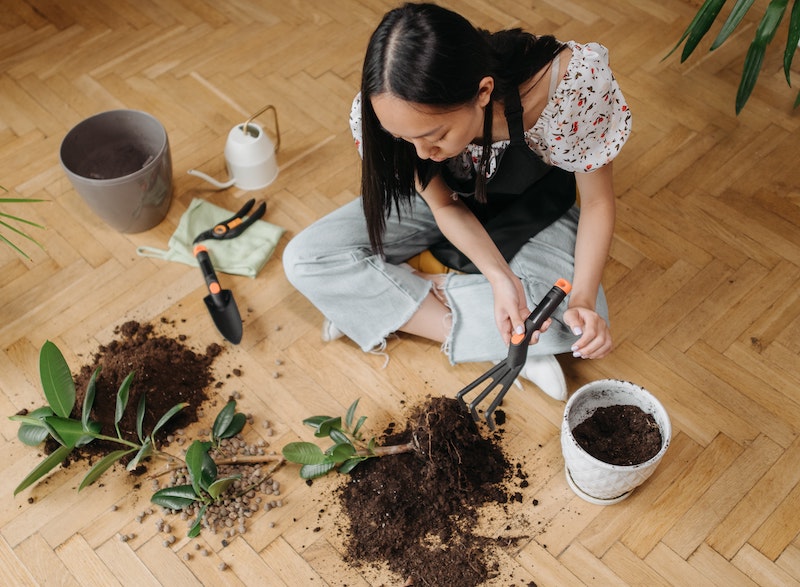Ficus is a beautiful tropical houseplant that you can enjoy for many years. When you bring your new ficus home, it will typically need to be transplanted to a bigger container. In subsequent years, it will need to be repotted when it outgrows its current home and needs a new pot. Or perhaps you found a more attractive pot that will complement ficus’s glossy green foliage better than its current vessel does. Whenever one of these instances arises, it’s relatively easy to transplant this ornamental from its old home to a new one.

Potting Ficus
Transplant ficus from its nursery container to a decorative pot within a day or two of purchasing it. Choose a decorative pot that drains well and is 2 to 4 inches larger than ficus’s rootball. Wash the decorative pot with warm, soapy water, and fill it with loamy, well-draining, slightly acidic soil. To eliminate pests, treat ficus with insecticidal soap, horticultural oil, or botanical oil such as Neem Oil. Then, transplant this perennial to its new home and quarantine it for one to two weeks before adding it to your plant family.
Repotting Ficus
In its optimal environment, ficus is a fast grower. To prevent this perennial from becoming root bound, transplant it about every 2 to 3 years. The best to repot is in the spring. Choose a pot that’s 2 to 4 inches larger than the old container. If the roots are growing out through the drainage holes, gingerly remove the ficus from its old container and trim about 25% of the length of its roots using a pair of cleaned sheers. Other reasons you may have to repot ficus include refreshing its soil, replacing a broken container, and improving drainage.

Best Soil For Ficus
Ficus prefers loamy, well-draining, slightly acidic soil. Since this tropical plant is susceptible to several fungal diseases, including root rot, soil that drains well is essential. A typical houseplant potting soil amended with perlite or pumice should suffice.
Ficus Drainage
As a tropical plant, ficus is accustomed to periods of wet weather followed by periods of drought. To replicate these conditions, deep watering is recommended. Water your ficus until you see water exiting the container’s drainage holes. Don’t water again until the top two or so inches of soil are dry to the touch. To prevent fungal diseases, ficus’s pot must possess an adequate number of large, unblocked drainage holes. To prevent stains on floors, patios, or decks, add a planter saucer or use a cachepot to hide a plastic pot sleeve.
 |
Author Suellen Barnes - Published 5-31-2023 |
